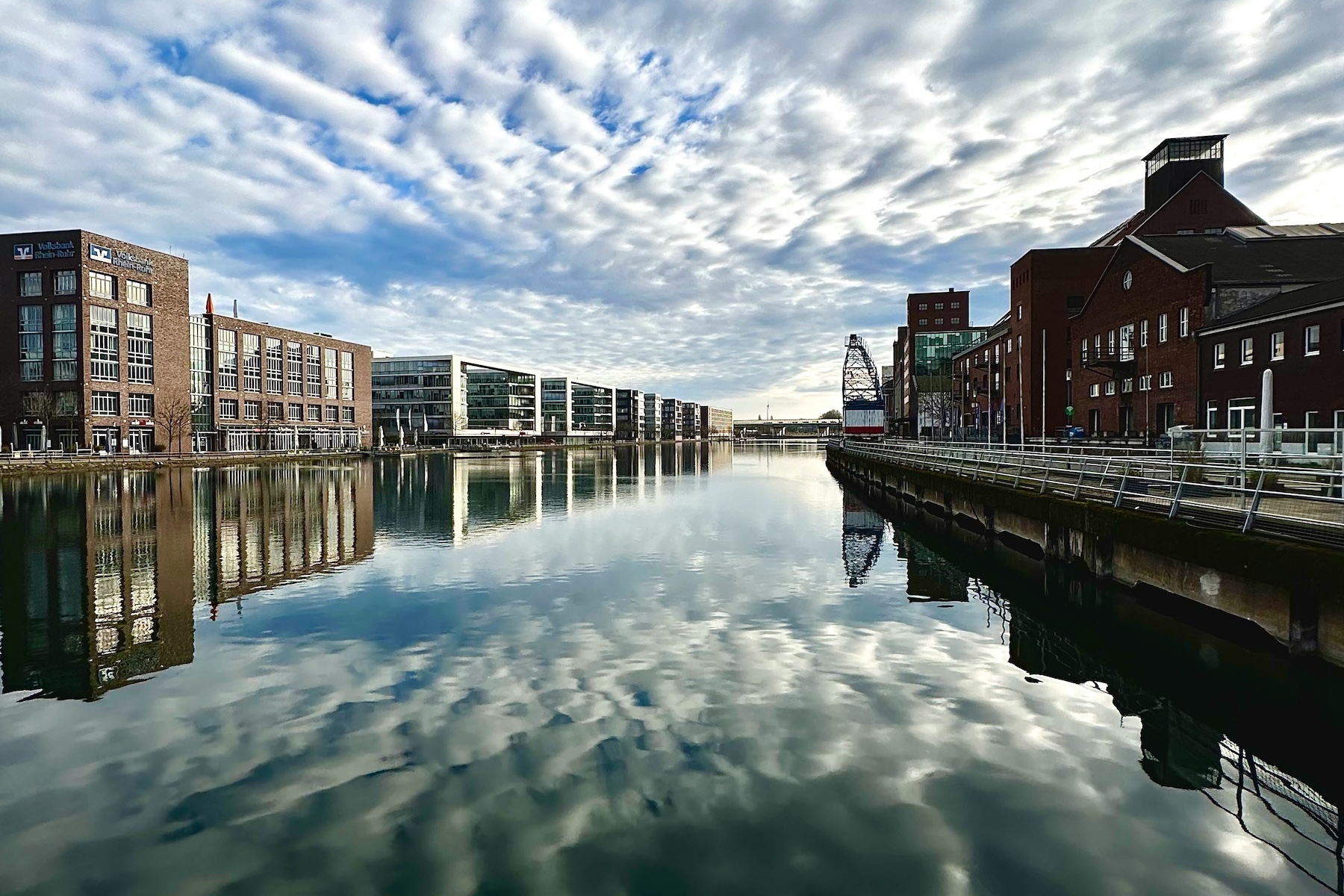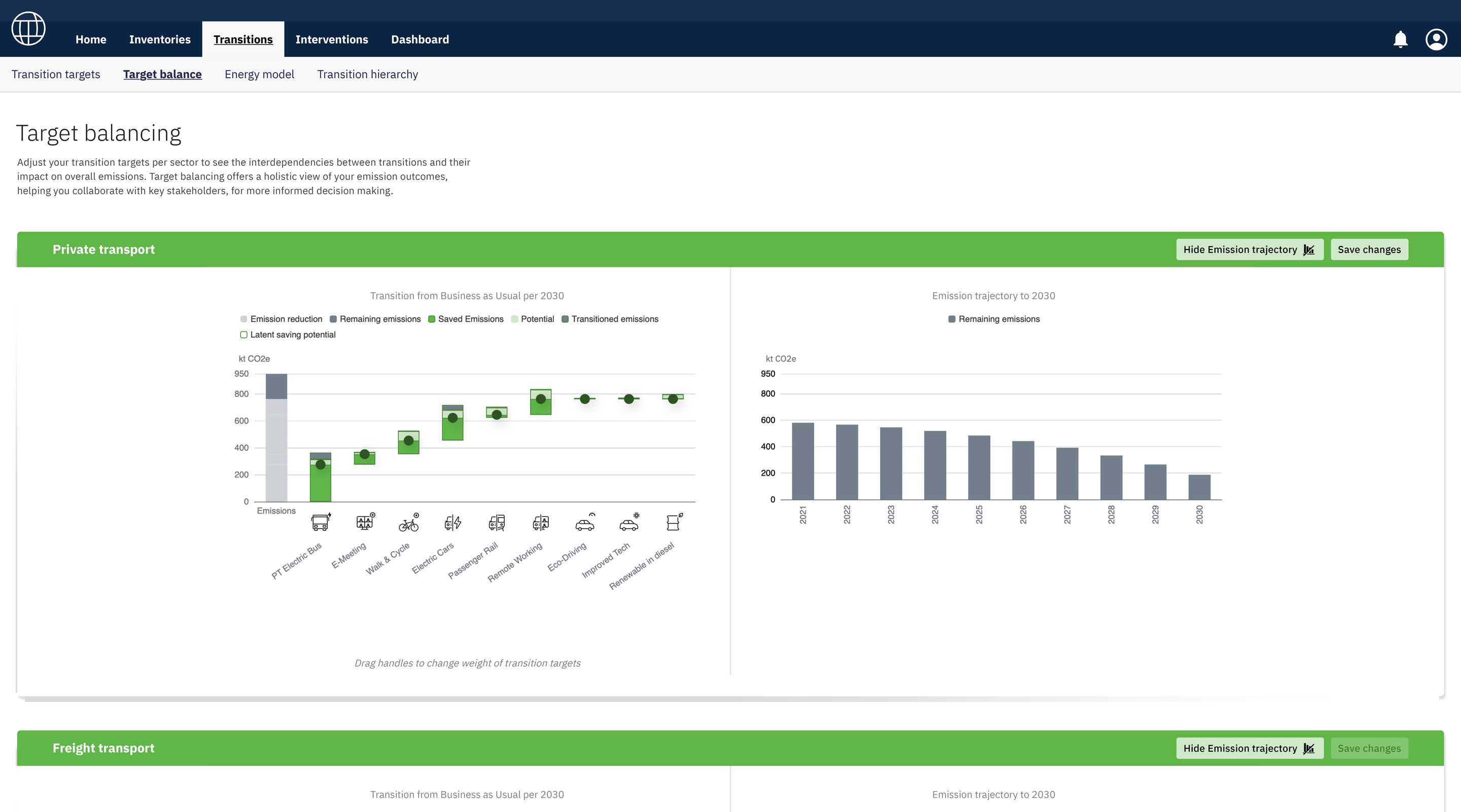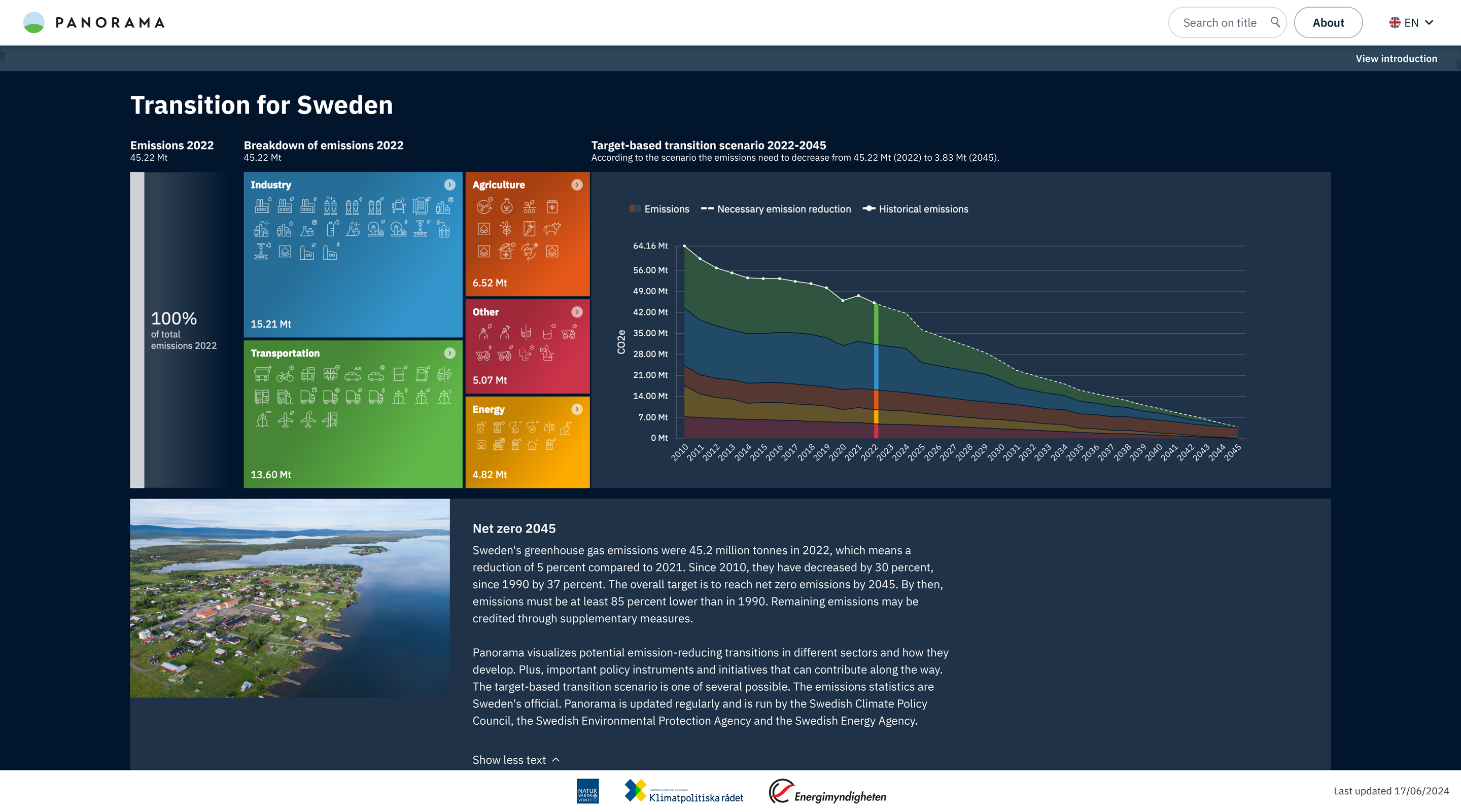Examples
The Transition Element Framework (TEF) originated from a multi-year collaboration between ClimateView, the Swedish Climate Policy Council, the Swedish Energy Agency, and the Swedish Environmental Protection Agency. It has since evolved through co-development with cities across the globe, including the Ruhr region in Germany and, most recently, the Scottish Climate Intelligence Service (SCIS).
In the ClimateView platform, the Transition Elements serve as fundamental building blocks for structuring climate mitigation options into practical climate action. The platform applies an agent-based model where each Transition Element acts as an individual “agent” within a system. These agents interact with one another, reflecting the interconnected dynamics of real-world systems. This modelling approach allows decision-makers to simulate how changes in one area, such as energy production, impact other areas, like electric vehicle adoption, providing a holistic view of climate transitions. By using ClimateView, users gain access to all of the TEF’s underlying data, putting it to immediate use and maximising its capabilities to assess and refine current and future climate interventions.
Through the ClimateView platform, the TEF is already driving measurable change and is being used to help governments across all levels meet their climate goals. The examples below showcase the TEF’s adaptability, illustrating how it is applied across diverse contexts.
Panorama¶
Early collaborations between ClimateView and key Swedish agencies evolved into Panorama, a roadmap to climate neutrality for Sweden. Panorama highlights how the data and insights from the ClimateView platform can be published to increase the transparency of climate action plans. An open-access platform for visualising Sweden’s climate transition that builds upon official data and public information. This data structure is updated regularly as policy evolves and emissions data changes.
“Panorama has become a valued platform for actors working with climate change and for those who want to understand, follow and discuss it. We hope and believe that the new version can reach even more people and in this way give the joint climate work a further push forward.”
- Ola Alterå, Head of Office, Swedish Climate Policy Council
Scotland¶
The Scottish Government plans to reach net zero by 2045 and has emphasised collaboration between national and local governments to achieve this. While ambition is high, local authorities need more data, resources, and a practical framework to follow.
To coordinate this nationwide climate transition and gain access to the data needed to drive this net-zero strategy, Scotland’s 32 local authorities are now using ClimateView. Through the collaborative platform, the various authorities are enabling systemic changes by addressing specific climate targets while still incorporating the interconnected nature of carbon emissions. This initiative is being led by the Scottish Climate Intelligence Service (SCIS) with support from the Government of Scotland.

Photo by Adam Wilson on Unsplash
Ruhr Region¶
A former hub of German coal and steel, the Ruhr Region now aims to be the world’s greenest industrial region by 2045. The Ruhr Regional Association is leveraging the ClimateView platform to integrate its climate efforts, promoting transparency, economic resilience, and citizen-centric planning across its 53 municipalities and five million inhabitants.
“The member municipalities of the Ruhr Regional Association can now plan climate protection digitally and calculate the impact in scenarios, thanks to federal funding. The platform makes networked municipal climate protection planning possible for the region. This collaboration takes us as a region a good step further towards becoming the greenest industrial region in the world.”
- Nina Frense, Deputy for Environment and Green Infrastructure, Ruhr Valley Region

Photo by Melanie Andersen on Unsplash
The ClimateView AI Engine¶
All of Climateview’s real-world data, learnings, and outcomes have been aggregated to create a new generative AI engine that suggests tailored climate actions for anywhere in the world. Building on the TEF's Outcome Logic, the AI Engine maps how interventions, public perceptions, behaviours, and activity changes are connected, guiding shifts toward sustainable actions with clear co-benefits.
The AI Engine is based on causality analysis that understands cause-and-effect relationships, meaning it doesn’t just indicate potential effects but can extrapolate outcomes from new scenarios and interventions. This allows decision-makers to evaluate the likely consequences, costs, and benefits of different actions or policies before implementation.
The AI Engine maintains a growing action bank of 2650+ reference cases across sectors—transport, energy, buildings, and more. This gives an actor, such as a city, direct access to proven successful actions, allowing them to see and understand what good climate action looks like.
To learn more about ClimateView, visit climateview.global

